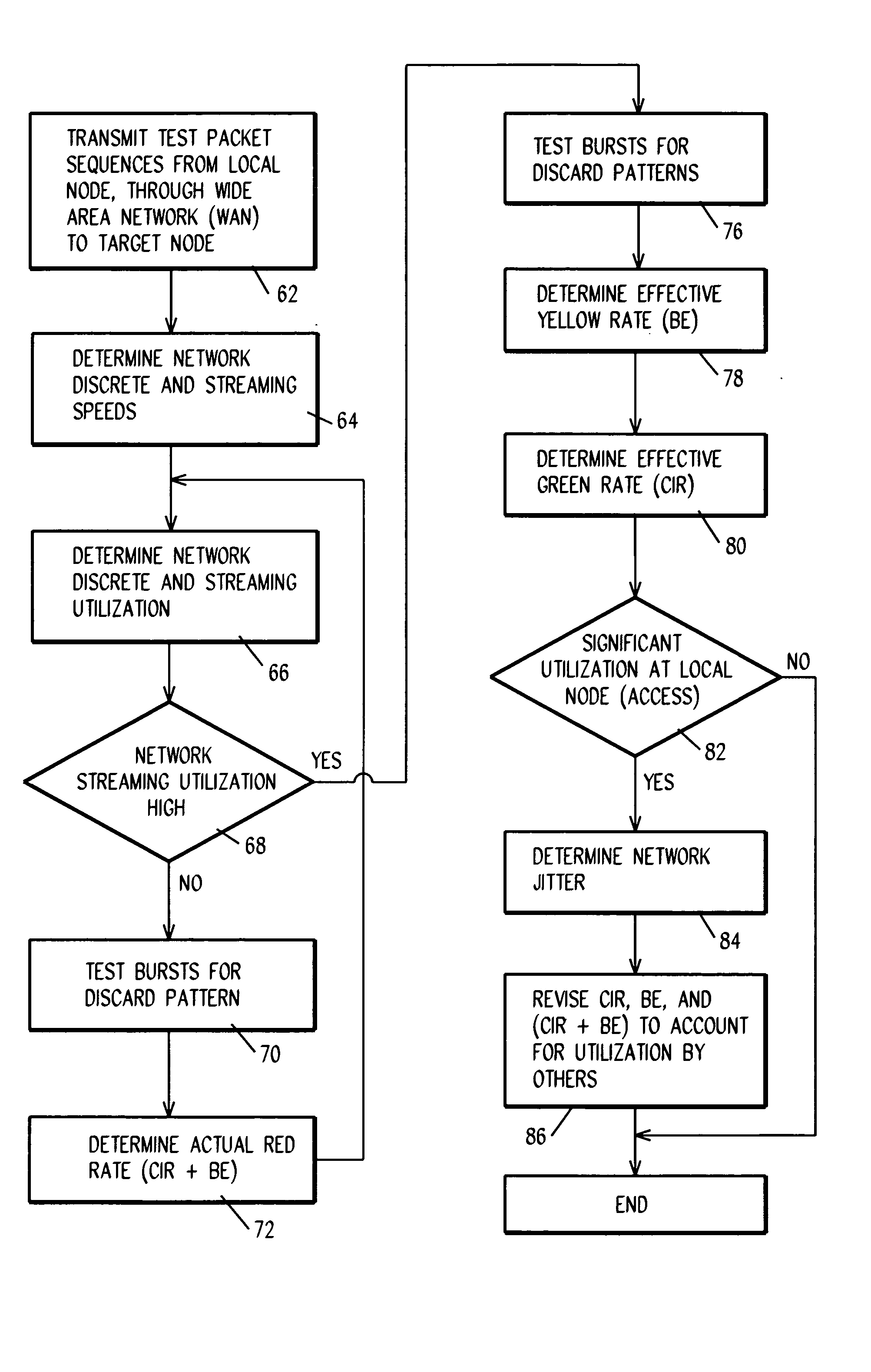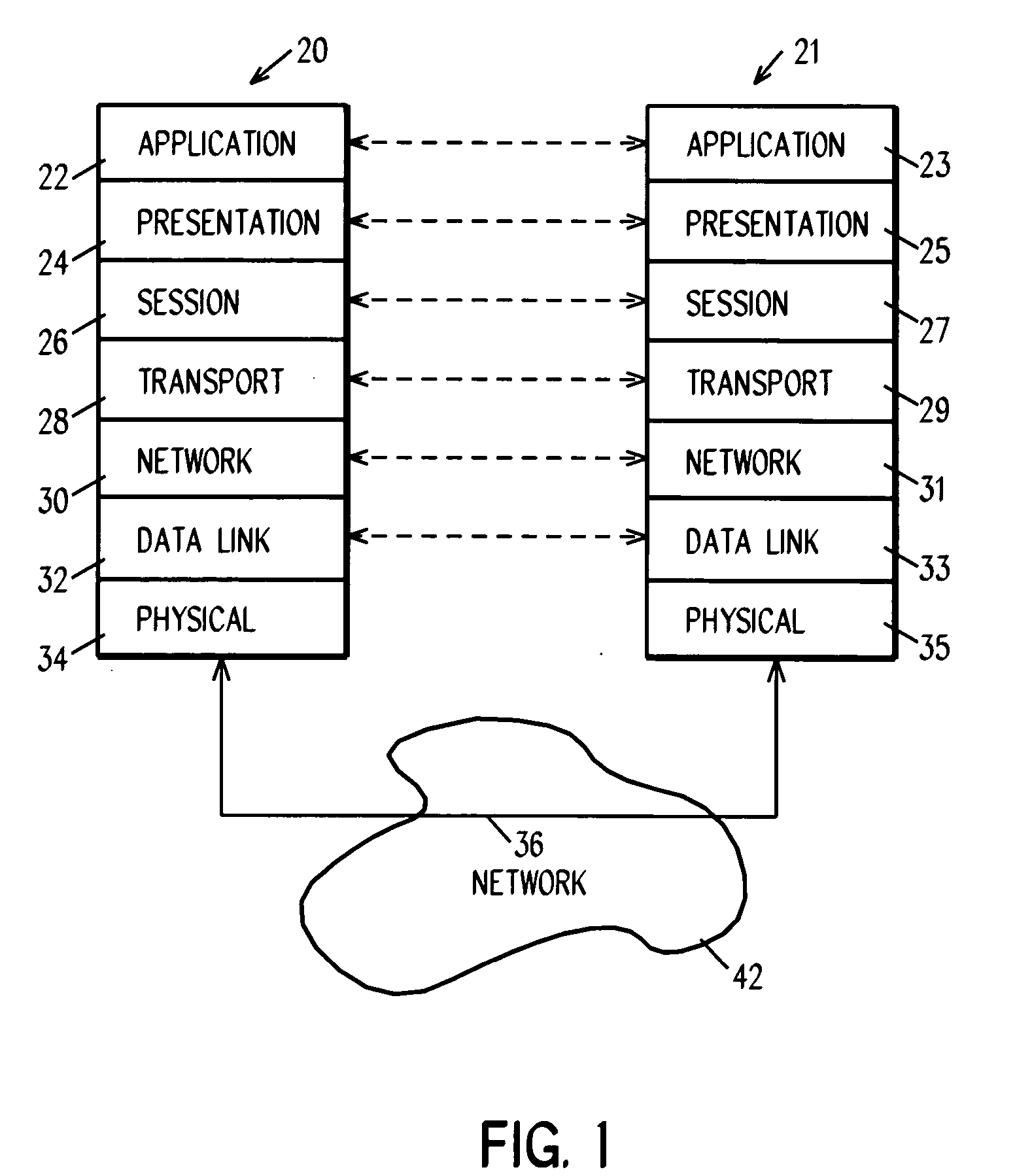System and method for testing differentiated services in a value add network service
a network service and network service technology, applied in the field of system and method for determining the characteristics can solve the problems of inability to check, suppliers of value add network services (vans) frequently are not able to describe to users how, and the requirement for accessing control block information is difficult to fulfill
- Summary
- Abstract
- Description
- Claims
- Application Information
AI Technical Summary
Benefits of technology
Problems solved by technology
Method used
Image
Examples
Embodiment Construction
[0028] In accordance with the preferred embodiments of the invention, a system and method is provided for determining the characteristics of a frame relay (FR) network. Such characteristics include frame relay network time constant (Tc) value, committed information rate (CIR), burst excess rate (Be), and access speeds. In this way, a provider or a user may determine a network's transmission characteristics for green (non-discard-eligible), yellow (discard eligible), and red (automatic discard) frames.
[0029] Determining network characteristics is done by transmitting test packet sequences through the network for determining network discrete speed; determining network streaming speed; determining network discrete utilization; and determining network streaming utilization.
[0030] Upon detecting that network streaming utilization is not significantly high a set of test packet sequences is transmitted and its discard rate is evaluated to determine the network's actual discard red rate. ...
PUM
 Login to View More
Login to View More Abstract
Description
Claims
Application Information
 Login to View More
Login to View More - R&D
- Intellectual Property
- Life Sciences
- Materials
- Tech Scout
- Unparalleled Data Quality
- Higher Quality Content
- 60% Fewer Hallucinations
Browse by: Latest US Patents, China's latest patents, Technical Efficacy Thesaurus, Application Domain, Technology Topic, Popular Technical Reports.
© 2025 PatSnap. All rights reserved.Legal|Privacy policy|Modern Slavery Act Transparency Statement|Sitemap|About US| Contact US: help@patsnap.com



